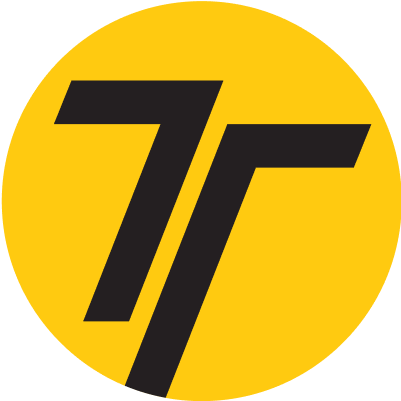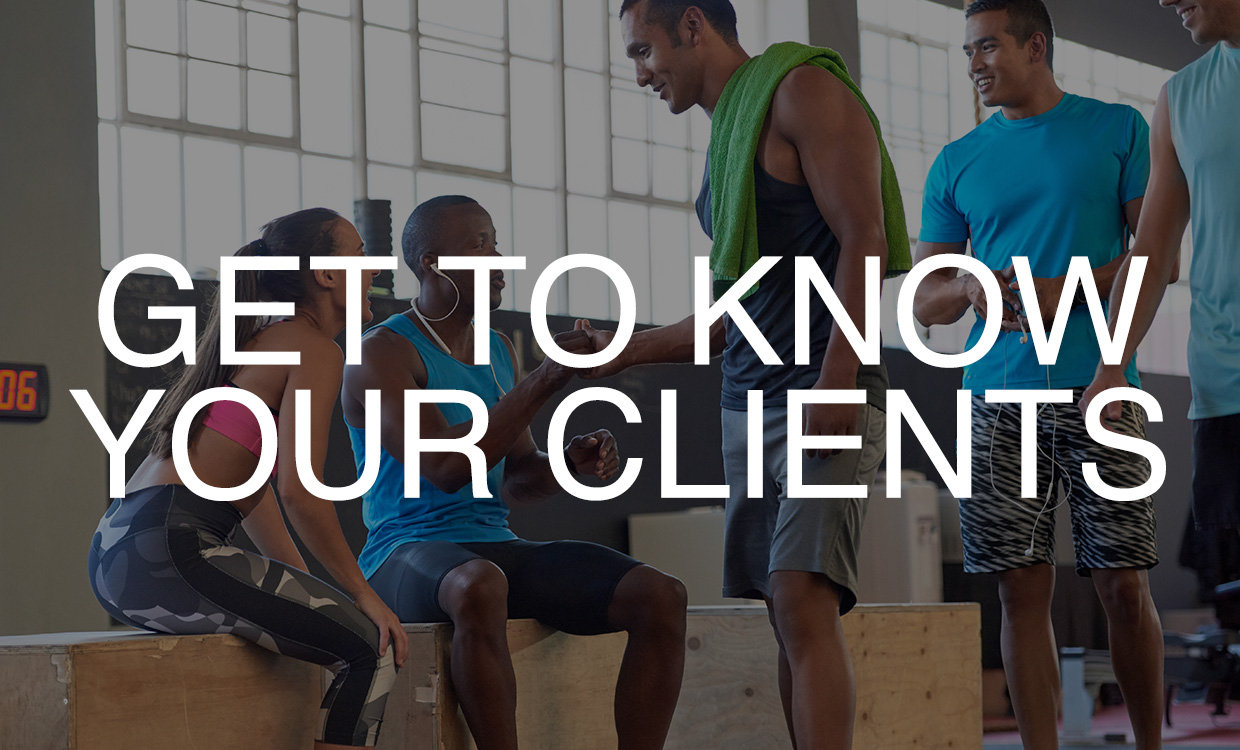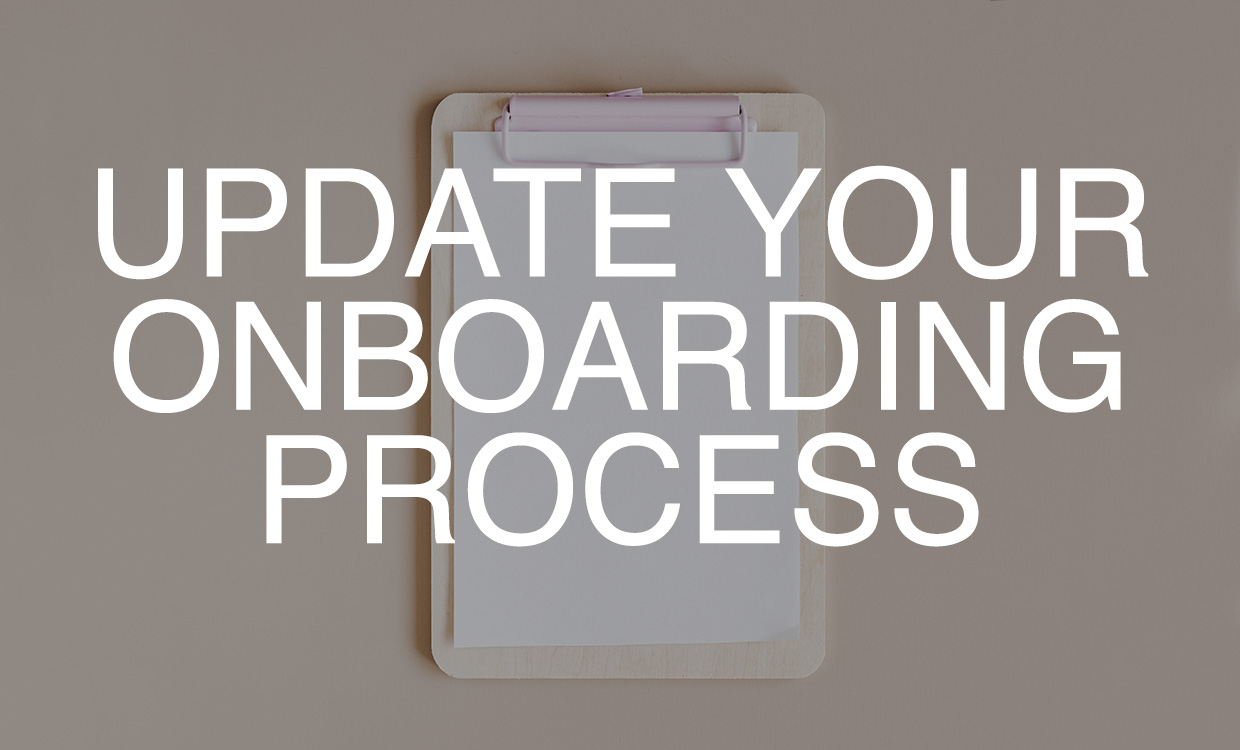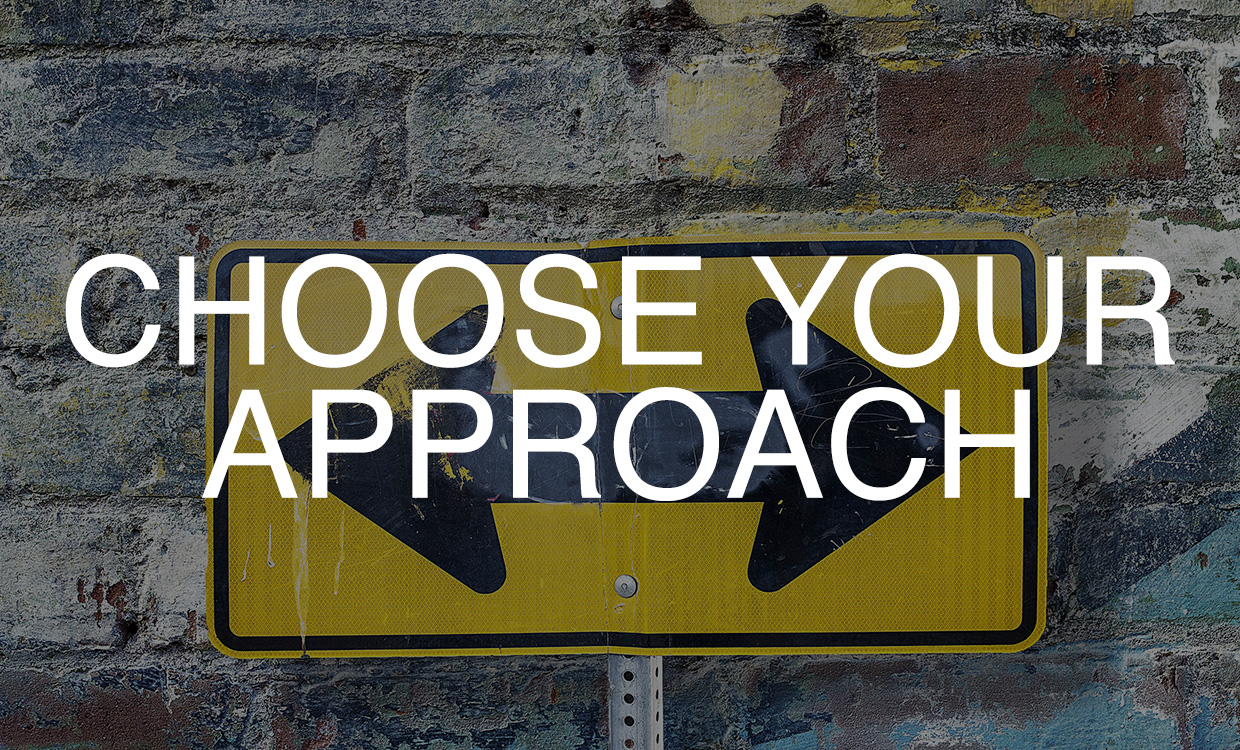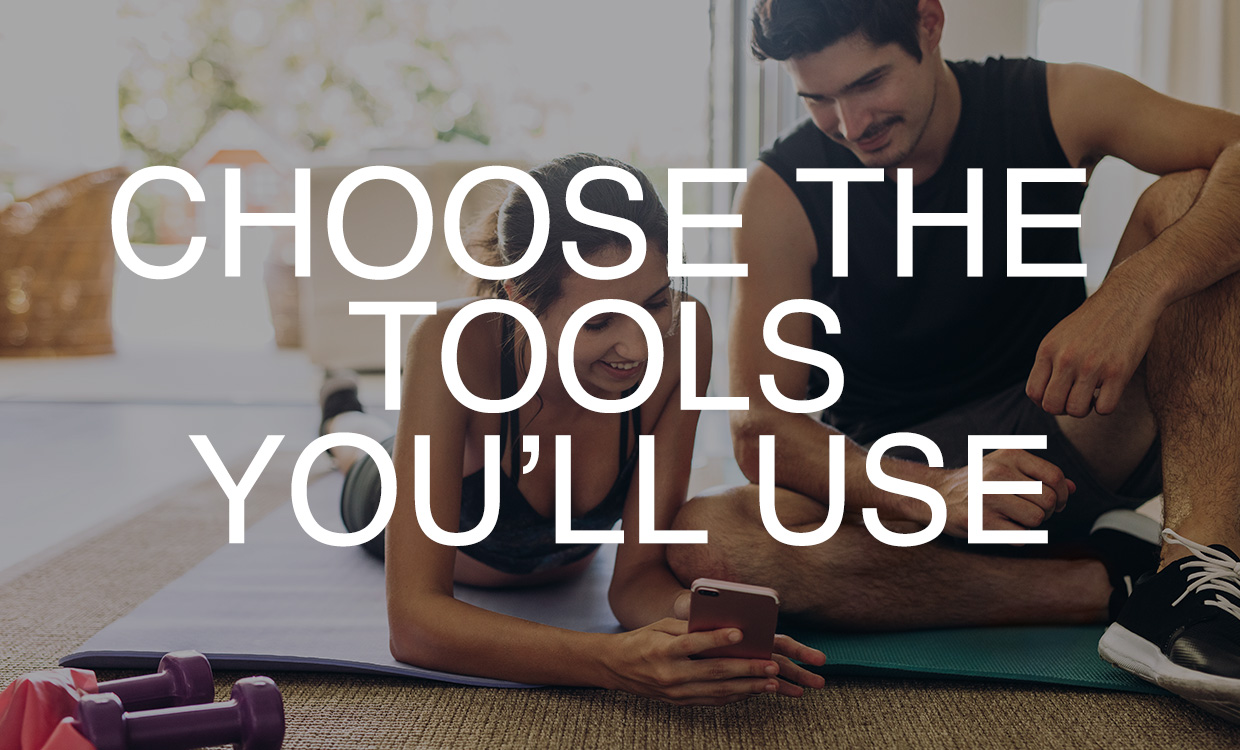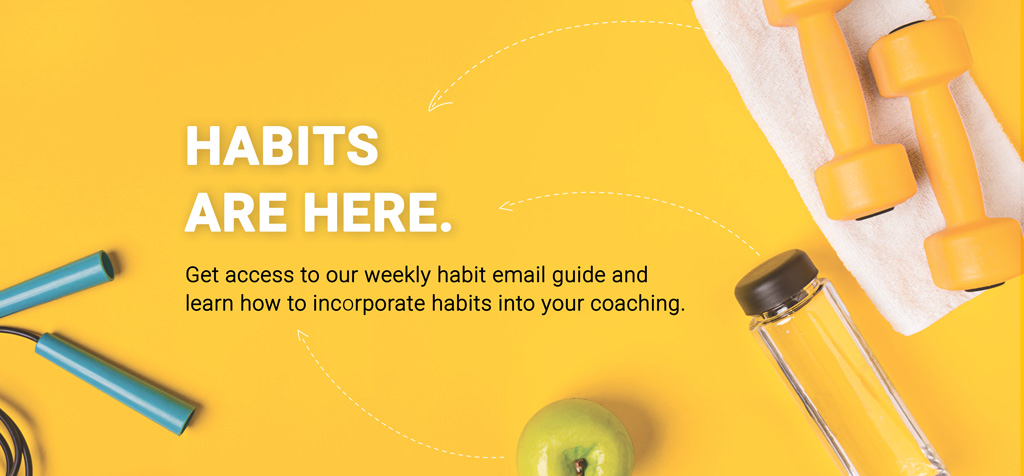So, you’ve got the basics down pat. You know what a habit is, how they’re created, how they’re broken, and how to make them stick. Now it’s time to put that knowledge to work with your clients!
Delivering Habit Coaching to your clients might seem like a daunting or complicated task, but just like with fitness and nutrition coaching, it really all comes down to having a solid game plan and the right tools to make it happen—a.k.a. strategy and implementation.
Let’s get into it! 🙌
Step 1: Get to know your clients (both current and potential)
Just like you would when building fitness or exercise programs, the very first step is to consider who you’re going to be training.
Hopefully, this is something you’ve thought about a lot already as you carved out your business niche and built your unique brand identity. But if this is new to you, not to worry! Take some time right now to examine who is among your existing client base and who you are trying to attract to train with you. Ask yourself:
- What types of clients am I currently working with?
- What types of clients would my expertise best serve?
- What types of clients are attracted to my pre-existing services?
- What types of clients do I most want to coach or most enjoy coaching?
Answering these questions should give you a clearer picture of who you’re working with right now and who you will be working with in the future.
It’s important to know what kind of clients you’re dealing with because this will dictate the kinds of habits you coach them on, the level of support they’ll need, and how you’ll deliver their habit coaching content (we’ll talk more about this later).
Step 2: Update your client onboarding process
Now that you have a general understanding of your clients’ needs, it’s time to dig a little deeper. As you already know, no two clients are the same, so while your general understanding is valuable, specific client information is priceless.
That’s why we recommend making client research part of your typical onboarding process.
This includes updating your initial client questionnaire to include questions about a client’s current habits and goals, and adding some habit-related talking points to your initial consultation plan or script.
Anywhere you collect information from your clients during their onboarding is a prime opportunity to gain valuable insights, so use them as best you can.
While this might feel like it’s part of the implementation side things (and it kind of is), it’s also a key part of your strategy because you can start collecting this information even before you start offering habit coaching services and then use your findings to inform your decisions.
This kind of research and data collection is a standard marketing and sales tactic used by businesses across all industries and is a critical step in building a strong business strategy—it also opens up future opportunities to run more targeted marketing campaigns (more on this later).
Step 3: Choose your approach
Hopefully, at this point, you have a super-strong understanding of who your clients are, what they’re looking for, and what they want to achieve, because based on that knowledge, it’s time for you to pick an approach (or multiple approaches) to habit coaching.
Think of this as the philosophy and basic structure behind how you’re going to offer habit coaching. The approach you choose should be able to answer a client’s questions of, “how exactly does habit coaching work?” and “what will it be like for me?”
While there are many different ways to go about it, we recommend the following 3 options:
- One habit at a time
- Habit stacking
- Full-scale habit curriculum
You can choose just one or use different approaches for different clients, but it’s important to have an understanding of how you want to tackle habit coaching before you dive into it.
One habit at a time
Ideal for:
- Beginner clients
- Clients who struggle with routine
- Client trying to break or replace multiple unhealthy habits
As the name suggests, this approach has a client practice just one habit at a time. The client spends a specific amount of time practicing that habit (we recommend a minimum of 3 weeks to truly cement the behavior, but you can choose however long you like) before moving on to the next habit.
Most often, the habits are ordered based on their importance for a client’s goals and their level of difficulty. Once they are able to execute a habit consistently for a prolonged period of time, the behavior is considered to be automatic and the client can move on to their next habit.
The benefits of this approach are that it is simple for clients to follow, allows for targeted work on specific and important habits, and makes client progressions easy.
Habit stacking
Ideal for:
- Most clients
- Client who are motivated by small wins or incremental improvements
- Clients who have a neutral to strong foundation of healthy habits
Originally coined by author S.J. Scott, the idea behind habit stacking is that you use pre-existing habits and routines to kickstart the development and adoption of bigger and better habits.
Essentially, with habit stacking, you’re teaching clients to create implementation intentions that use the cues they already respond to start a chain reaction of healthy habits. You’re starting with what your clients are already doing and using it to their advantage. Ingenious, isn’t it?
Here’s an example of how it might work for a client:
If a client filled in their initial questionnaire (the one you updated as part of step 2 in your habit coaching strategy) and said that their current daily routine involves waking up early every day to walk their dog, you might be able to use that ingrained behavior and stack a new habit (such as drinking a glass of water first thing in the morning) on top of it.
The client would make an implementation intention that says, “Before I take the dog for a walk, I will drink a glass of water.” It might take a bit of practice or some gentle reminders (like, moving the dog leash into the kitchen), but the cue of walking the dog should remind them to drink their water. Once they’ve mastered that habit, you could stack another one on top, like taking vitamins or doing a 5-minute stretch, for example.
This approach is a gradual and seamless way to add more and more healthy habits into your clients’ lives. Because of how simple it is to implement and how effective it can be, the approach has seen a rise in popularity over the last few years, with many, including Stanford professor and author, BJ Fogg, espousing its benefits. (You can read more about habit stacking and how to use this approach with your clients in BJ Fogg’s book Tiny Habits).
Full-scale curriculum approach (coming soon in Trainerize)
Ideal for:
- Clients who need to create a foundation of good habits before they can begin other types of training (e.g., fitness and nutrition coaching)
- Clients who are already familiar with habit building/habit coaching
- High-performing training clients
If you’ve always been a fan of the mantra, “go big or go home” the full-scale curriculum method might be the right fit for your approach to habit coaching.
Instead of having clients focus on just one or a handful of habits, with this approach, clients are prescribed an entire multi-layered series of habits that not only build in difficulty but that are rigorous enough to stand on their own—either as a program completed before beginning other forms of training or as an accompaniment to other coaching.
This approach is much more rigorous than the previous two approaches discussed and puts the habits center stage as a deeply important part of a client’s health and fitness.
Step 4: Identify the tools you’ll use to support your approach
Now that you’ve locked down an approach to habit coaching it’s time to get up close and personal with the tools and features you’ll use to deliver habit coaching and help your clients make lasting changes.
This is (surprise, surprise!) where Trainerize comes in. With its built-in suite of habit-coaching features (which, we might add, is constantly being expanded), it’s the perfect way to get your clients on the path to healthy habits—especially if you’re already using it for fitness and nutrition coaching, too!
So let’s take a look at some of the key features you’ll want to make the most of:
Welcome Email + Custom Attachments
You want to make a positive impression on your clients from the very beginning of their fitness journey with you, and some of the best features to help you do that are the Trainerize Welcome Email and its Custom Attachments.
Before adding any clients to the app, take some time to review the content of that welcome email and make it your own. Go over the importance of habits in achieving their overall goals, and give them some insight into what they can expect as they work with you.
You may also want to attach a resource to your welcome email. Many trainers use this as a way to share their methodology with their clients by putting together a small guide going over how training will work, what’s included in their program, how to reach out if they need help, and so on. Others like to include worksheets that ask the client to reflect on some key questions, evaluate their current habits and behaviors, and set goals.
Get creative with what you include here and feel free to add some habits-related information. This is, after all, one of the first things they’ll be receiving from you when their motivation and engagement is at an all-time high, so it’s important to make the most of it!
Goals
Your clients will likely come to you with at least one goal in mind, and that’s an excellent place to start. But too often, the goals clients set for themselves are too ambitious or too vague. That’s where you can help.
Consider kicking off your training with a 1-on-1 goal setting session where you talk to your client about what it is they really want and help translate that into SMART goals. You could do this in-person or using a live video call. Once you’ve got those pinned down, use the Trainerize goals feature to add them in-app and decide, with your client, how progress will be measured and updated.
Master Habits Library
In order to start habit coaching, you’ll first need a list of habits that you’d like to assign to your habits. Lucky for you, Trainerize has taken care of that for you by providing a ready-made collection of science-backed and expert-approved habits—each identified as a key habit trainers can use to help their clients lead healthier lives. You’ll find these ready-to-use habits in your Master Habits Library.
If you want to apply your own unique coaching method or have more ideas of habits you’d like to assign to clients, you can also create your own Master Habits. Once you’ve got the habits you’d like to use in the Master Habits Library, you can quickly assign them to multiple clients in just a few clicks. Not only will you be saving time creating habits, with Trainerize, you’ll also be saving time assigning them.
Custom Client Habits
Of course, as we’ve said before, not all clients are the same, so to help you truly create a customized experience, you can also use Trainerize’s custom client habits feature.
Simply open up the account of the client you want to do some deep customization for, head to their habits tab and enter the habits you want them to track and complete. These habits will show up in their daily to-do lists just like any habits you assign them from the master habits library but they’ll be uniquely crafted for them.
Habit Streaks
A core part of habit formation is repetition. Clients need to be diligent in their practice and complete the habits consistently for a long enough period of time until they become automatic. To help encourage consistency, Trainerize has a feature called Habit Streaks that is enabled as soon as you assign a habit.
Here’s how it works: each time your client completes a specific habit you’ve assigned to them (drinking 8 glasses of water each day, for example), they check it off, and a habit streak begins. The next time they complete the habit, their streak is extended. As they hit key milestones, they’ll receive achievement badges (like “longest streak ever!” or “10-day streak”). But if they miss completing a habit on a day when it was scheduled, their streak ends and they start from the beginning again.
It may sound simple, but streaks are a basic form of gamification, which can help keep clients motivated and give them an extra measure of their success—even if they aren’t yet seeing results in their health or fitness.
Wearables
Unlike workouts or meals which tend to take place just once or a few times a day, habits have a more erratic schedule. And because they can happen anytime, anyplace, it’s important to make tracking those habits as easy as possible.
That’s why we recommend enabling the Apple Watch App powered by Trainerize. Clients with an Apple Watch will be able to see and check off their daily habits right from their wrist. It’s the fastest and easiest way to get clients to track their behavior and a seamless way to remind your clients to make good choices.
Video Calls
Earlier, we mentioned using video calls to run initial goal-setting sessions with your clients, but there are plenty more ways you can use video calls as part of your habit coaching services!
One option is to schedule video calls at regular intervals throughout your clients’ training programs and use them as 1-on-1 check-ins where you discuss how your clients are doing with their habits, talk about the blockers they’re facing, help them form implementation intentions where needed, or plan out the next habits they’ll practice.
Habits are often a very personal thing—some clients might be trying to break bad habits like smoking, binge eating, or late-night snacking that often come with shame or guilt—so it’s a good idea to include extra personal touches in your habit coaching. Having a chance to connect with you face to face could help your clients feel more connected to you, encouraging them to be more honest with you about their bad habits, which can then help you build a program that will truly help them hit their goals.
Video Workouts
You might be thinking “video workouts? What does that have to do with habits?”—and it’s a great question! But don’t let the feature name throw you off.
Video workouts in Trainerize are really just an opportunity to send your clients a longer more in-depth video experience. Sure, you can use them to create follow-along sweat sessions, but you can also use them to teach extended lessons on anything you like—including habits.
Here are some ideas of video workouts you can create to help support your habit coaching:
How to Prep for Healthy Habits
Review how your clients can prepare themselves and their environments to set themselves up for success. This might include ditching old routines, clearing out the sweets cupboard, or picking up some equipment they’ll need.
How to Adopt a Healthy Habits Mindset
Help clients get into the right mindset to build healthy habits and ditch bad ones by going over tips to overcome their mental hurdles. This might include a review of positive thinking or how to distract yourself when fixating on something unhealthy to your progress.
How to Get Back on Track with Healthy Habits
Everyone slips at some point, but it’s how you dust yourself off and keep going that matters. Use this video to give clients a pep talk on how they aren’t measured by their mistakes, but by their willingness to keep trying and offer them some tips to get back on the path to success.
If you’re including habits like mindful meditation or post-workout stretching, you might also include video workouts your clients can use to support these habits, like guided meditation sessions or full-body stretching routines.
Step 5: Start thinking about building habit-based programs (new features coming soon!)
Currently, all habit coaching in Trainerize is assigned to clients on top of their other training—whether that’s fitness, nutrition, or both.
But if you know anything about Trainerize, you know that we’re constantly making upgrades to the app and giving you more ways to deliver training and engage your clients.
One of those upgrades, slotted for 2021, will allow you to both add habits into your clients’ training programs and create 100% habit-focused programs.
So, while you can’t start building habit programs in-app quite yet, we wanted to let you know that it’s coming and encourage you to start thinking about how you’d apply everything you’ve learned in steps 1 through 4 of this lesson and apply it to your programming.
For now, keep your eyes out for announcements about our upcoming habit features, and subscribe to our habits email course or sign up for a free trial to be alerted when new habit coaching features arrive!
#SmallChangesBigResults
